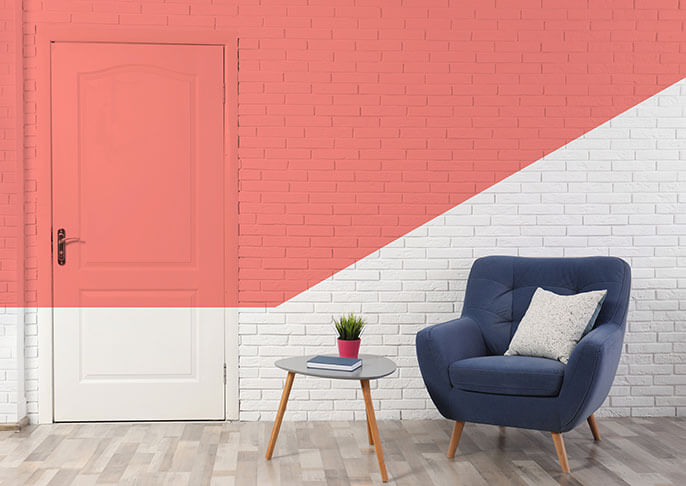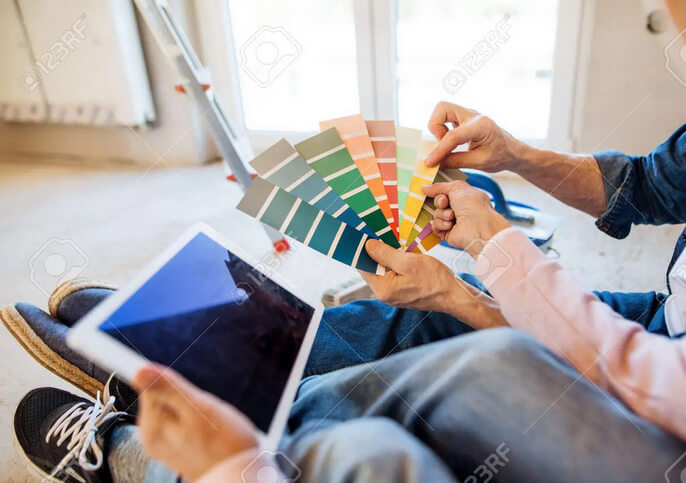Painting your home’s interior is an excellent way to keep your home looking beautiful. Alton Barnes has all the painting solutions you need with high-quality paint for a professional finish.
Our painters are highly qualified professionals with exemplary painting skills that leave your home looking elegant. Our interior painting contractors in South Shore, Cape Cod, and the Islands examine the type of surface and recommend the best paint for it. Our passionate residential interior painters help you conceptualize your dream colors and bring them into reality. Our painters meticulously paint your interiors for long-lasting results. Additionally, our team is well-versed in selecting the right type of paint and materials for each unique project, ensuring optimal results. We prioritize proper surface preparation to enhance paint adhesion and longevity, and our commitment to safety means you can trust us to handle hazardous waste disposal in a safe and lawful manner. With expertise in managing old lead paint, we guarantee a comprehensive and professional approach to transforming your living spaces into beautiful works of art.
Our Services
Does the pricing for your interior and exterior painting services solely depend on the square footage of the area being painted? |
Does the pricing for your interior and exterior painting services solely depend on the square footage of the area being painted?
Alton Barnes Painting takes various factors into account when providing estimates for painting projects. While measurements play a role in the estimation process, they are not the sole basis for pricing. Other essential considerations include the presence and type of windows, molding, and other trim elements in the space, the number of different colors to be applied along with the number of coats required, the quality of the paint chosen, the level of protection needed for furniture, as well as the amount of preparatory work involved. All these factors collectively help in determining the overall cost of the painting project beyond the square footage of the area to be painted.
Is it possible to apply paint directly on wallpaper to bypass the removal process? |
Yes, it is possible to paint over wallpaper without having to remove it entirely. However, it is important to ensure proper preparation to achieve a smooth and clean finish. Before painting over wallpaper, you should take the extra step of preparing the surface by using spackle or another suitable material to fill in and smooth out any seams or imperfections. This extra step will help to ensure that the wallpaper seams do not show through the paint once the project is completed. Properly preparing the wallpapered surface will result in a professional-looking painted finish without the need to strip the wallpaper beforehand.
What makes oil-based paints different from latex paints? |
Oil-based paints and latex paints have several key differences. Oil-based paints typically provide a smoother finish and are less likely to show brush strokes compared to latex paints. They are also generally more washable. On the other hand, latex paints may have a longer lifespan on exterior surfaces because they do not harden and become brittle as quickly as oil-based paints. Additionally, latex and acrylic paints are considered safer options as they are free of harmful fumes and can be cleaned up using just water, eliminating the need for volatile and environmentally unfriendly paint thinners. It is important to choose the right type of brush when using these paints; natural-bristle brushes can be used with both types of paint, but synthetic bristles are recommended for use with latex and acrylic paints for long-term durability.
Is it necessary to apply a primer or sealer before beginning the painting process? |
Yes, it is recommended to use a primer before painting, especially in certain situations. When painting over surfaces like water stains or knotty wood, using a sealer is important to prevent any stains from bleeding through the finished paint. A layer of primer helps the paint adhere better to the surface and provides a smooth finish. Additionally, primers are essential when painting porous surfaces such as wood as they help create an even texture for the top coat to be applied smoothly.
Can the weather impact the painting process? |
Weather does indeed have a significant impact on painting projects. It is advisable to avoid painting in the rain, as the wet conditions can prevent the paint from adhering properly and lead to a lackluster finish. Extreme heat and high humidity can also be problematic, causing the paint to take longer to dry and potentially leading to issues such as blistering and peeling. Experts suggest that painting should be done within a certain temperature range, ideally between 50 and 85 degrees Fahrenheit, to ensure the best results. By paying attention to the weather conditions and choosing the right time for painting, you can achieve a more successful and long-lasting finish for your project.
What steps can I take to avoid chalking, blistering, or peeling of my clapboard when repainting my house this year? |
To prevent your clapboard from becoming chalky, blistering, or peeling when repainting your house, it is crucial to take the following steps: 1. Apply a sealer and primer before painting to create a strong base that helps prevent chalking. 2. Use high-quality paint to ensure a durable and long-lasting finish on your clapboards. 3. Properly prepare the surface before painting, ensuring it is clean, dry, and free from any existing issues like blistering or peeling. 4. Avoid painting in direct sunlight, as this can cause the paint to dry too quickly, trapping moisture and increasing the risk of blistering. 5. Regular maintenance and touch-ups can also help prevent issues like chalking, blistering, and peeling in the future.


